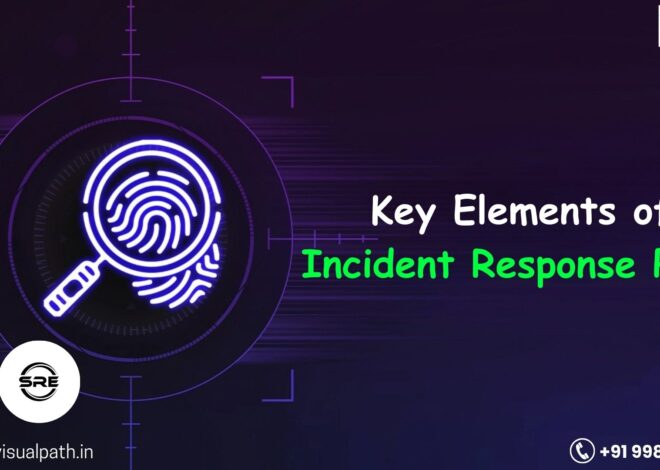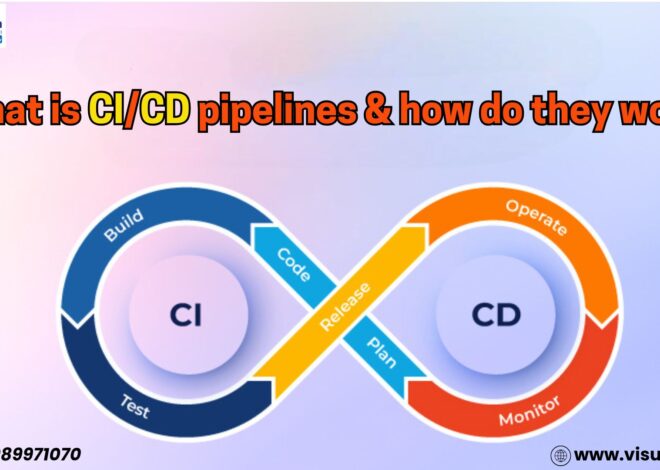Introduction:
Site Reliability Engineering (SRE) Training has become an essential part of modern IT operations and infrastructure management. As organizations continue to embrace digital transformation, the demand for SRE professionals is growing. If you are looking to excel in this field, enrolling in Site Reliability Engineering Training, or obtaining an SRE Certification Course, will help you stay ahead of the curve. The role of SRE is constantly evolving to meet the challenges of an increasingly complex, dynamic, and cloud-based IT environment. In this article, we will explore the top five trends that are expected to shape the future of Site Reliability Engineering in 2025 and beyond.
1. AI and Automation in Site Reliability Engineering
One of the most prominent trends in SRE is the increasing use of Artificial Intelligence (AI) and automation. By 2025, AI and machine learning (ML) technologies will play a significant role in the day-to-day operations of SREs. These technologies will help automate repetitive tasks, improve incident response times, and enable proactive detection of potential system failures.
Through predictive analytics and anomaly detection, AI can anticipate potential failures in an infrastructure before they occur, allowing SRE teams to take pre-emptive action. Automation tools can also help manage scaling, monitoring, and testing at a much faster pace than traditional methods. This reduction in manual intervention will empower SRE teams to focus on more strategic tasks, ultimately improving system reliability and performance.
To stay competitive in the field, professionals interested in SRE will benefit from training programs focused on AI and automation in the context of Site Reliability Engineering. Investing in Site Reliability Engineering Training will provide the skills needed to integrate AI tools and techniques into your organization’s SRE processes.
2. Shift Left in Monitoring and Incident Response
The “Shift Left” movement, which involves addressing problems earlier in the software development lifecycle, will be a critical trend for SREs in 2025. Traditionally, monitoring and incident response were handled by operations teams after deployment. However, with the increased focus on collaboration between development, operations, and quality assurance (QA), SREs are adopting the Shift Left approach to improve system reliability.
In the future, monitoring will be integrated earlier into the development process, with automated tools ensuring that issues are detected and addressed in real-time during the development phase. By identifying and resolving problems before they reach production, organizations can minimize downtime and improve the overall customer experience.
As an SRE professional, you should seek out an SRE Course that covers the Shift Left methodology, particularly as it relates to monitoring, testing, and incident management. With this knowledge, you can actively contribute to the development lifecycle, making a significant impact on your team’s reliability goals.
3. Observability as a Critical Component of SRE
Observability is an essential part of Site Reliability Engineering, and it is expected to grow even more critical in 2025. While monitoring allows teams to track system health through metrics and logs, observability provides a deeper understanding of why and how a system behaves in a particular way.
In 2025, SREs will rely heavily on observability platforms that enable them to track, analyse, and visualize complex system interactions in real-time. With observability tools, teams will be able to rapidly identify root causes of issues, improve system performance, and minimize downtime. This shift towards deeper visibility will allow SREs to make more data-driven decisions about infrastructure scaling, incident response, and failure recovery.
As part of your Site Reliability Engineering Training, you will need to familiarize yourself with observability tools and best practices. By mastering these platforms, you will be equipped to tackle increasingly complex systems and deliver enhanced reliability.
4. Cloud-Native and Multi-Cloud Strategies
The adoption of cloud technologies will continue to rise, with many organizations embracing multi-cloud strategies. In 2025, SREs will be managing complex, hybrid environments that span across multiple cloud providers, on-premises infrastructure, and edge systems. This means that Site Reliability Engineers will need to possess a strong understanding of how to manage these distributed environments while ensuring system performance and reliability.
Multi-cloud architectures present unique challenges for SREs, including maintaining consistency across different platforms, ensuring availability, and managing costs. To address these challenges, SREs will need to adopt cloud-native tools, develop cross-platform deployment strategies, and implement robust monitoring systems.
For those pursuing an SRE Certification Course, it is crucial to gain a solid understanding of cloud-native technologies, such as Kubernetes, Docker, and other containerization tools. These technologies will form the backbone of many future SRE practices, particularly in complex multi-cloud environments.
5. Resilience Engineering and Chaos Testing
As the complexity of systems increases, organizations will place a stronger emphasis on resilience engineering in 2025. Resilience engineering focuses on building systems that are robust enough to handle unexpected failures and can recover quickly from disruptions. This trend is particularly important in the era of micro services, where individual components of a system can fail without bringing down the entire application.
Chaos testing, a form of proactive failure testing, will become an even more important tool in the SRE toolkit. Chaos testing involves deliberately injecting failures into systems to ensure they can withstand and recover from adverse conditions. By performing chaos engineering tests, SREs can identify weaknesses in their infrastructure before they lead to costly outages.
To stay on top of this trend, professionals looking to advance in Site Reliability Engineering will need to incorporate chaos engineering practices into their daily operations. Learning about resilience testing and how to implement chaos experiments will become key components of an SRE Certification Course.
Conclusion
As we move toward 2025, the field of Site Reliability Engineering is poised for exciting advancements, driven by AI, automation, cloud-native technologies, and a renewed focus on system resilience. The trends discussed above highlight the importance of adopting new tools and methodologies to stay ahead of the curve in ensuring system reliability and performance.
To excel in this evolving field, it is crucial to invest in continuous learning and skill development. Whether through Site Reliability Engineering Training or enrolling in an SRE Certification Course, SRE professionals must stay informed about emerging trends and equip themselves with the knowledge needed to adapt to new challenges. Embracing these future trends will not only enhance your skills as an SRE but will also position you for success in an increasingly complex IT landscape.
By understanding the importance of AI and automation, the Shift Left movement, observability, multi-cloud strategies, and resilience engineering, you will be prepared to take on the evolving challenges of the future. These trends will shape the role of SREs in the years to come, and by adopting them early, you will solidify your place as a leader in the field of Site Reliability Engineering.
Visualpath is the Best Software Online Training Institute in Hyderabad. Avail complete Site Reliability Engineering (SRE) worldwide. You will get the best course at an affordable cost.
Attend Free Demo
Call on – +91-9989971070
WhatsApp: https://www.whatsapp.com/catalog/919989971070/
Visit: https://www.visualpath.in/online-site-reliability-engineering-training.html




